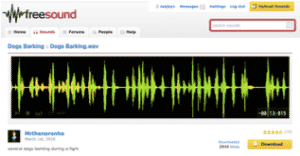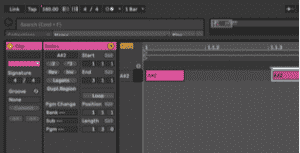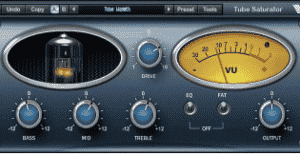Beats and Pieces
Percussion
HISTORY
Recommended Viewing:
Hip Hop Evolution 2020 (Netflix)
Sometimes starting with a drum rhythm can help spark a whole new song idea. Don’t take our word for it, listen to Cylde Stubblefield (drummer for James Brown in the early 70’s) explain how the ‘Funky Drummer’ song came to fruition. Time Stamp: 0:00 – 1:41 END.
Explore for a moment some of the most iconic and sampled percussion loops in Hip Hop history. To date, ‘Funky Drummer’ has been sampled commercially over 1,000 times.
Here is a list of just a few classic examples:
- The Winston’s – Amen Brotherie Tyler The Creators PIGS
- Led Zeppelin – When the Levee breaksie Beyonce – Don’t Hurt Yourself
- The Honey Drippers – Impeach the Presidentie Notorious BIG Unbelievable
- James Brown – Funky Drummerie Whosampled
EXERCISE
Load the 3 drum breaks into your DAW. Create a 4 bar loop using all 3 loops. Switch it up, edit parts to make it sound like your own.
Consider some of these techniques:
» Create movement using Volume automation and Filter automation.
» Chopping, looping in shorter durations
» Add free FXs. Try Tal Reverb or Valhalla Freq Echo
MODERN DRUMS
Recommended Reading:
Making Music: 74 Creative Strategies for Electronic Music Producers (Pgs 160-195, 202-204)
One could argue that Hip Hop music is an amalgamation of
all types of musical genres (Reggae to Latin, Jazz and Funk). Take a moment to listen to different genres and challenge yourself with this question. How can you make your beat stand out? Percussive patterns are the backbone of your beat and therefore rhythm is extremely important.
Your rhythm pattern doesn’t need to be complex in order to be memorable. Lunchroom style beats like Clipse ‘Grindin’ or Vince Staple’s ‘Big Fish’ aren’t necessarily the most dynamic patterns albeit still effective for the song.
Pick a tempo: 70, 80, 90, 100, 150; then start with a basic foundation using only stock drum sounds: kicks, snares, claps, hats.
After you have a basic beat down, consider the following:
- » What could I replace my closed hi hat with?
- » What could I layer my snares with?
- » Look at percussion celebrated in different regions of the world — bongos, congas, tamboras.
- » Try experimenting with FREE sampling field recordings – animal sounds, doors closing, keychain rattling, footsteps
A STEP FURTHER RHYTHMICALLY AND DYNAMICALLY
» Mute sections, add silence or noise to certain drum elements during certain moments in the arrangement.
» Offset sounds by taking a drum element that usually falls on a certain quantized step and offset it to a different step. Try FREE FX tools: Glitch 2 and Fracture
» Flam or add rolls to certain elements (ie hat rolls leading up to snare) [image]
» Polyrhythms have more than one rhythm playing on top of each other. Start with Kick and Snare as one rhythm and the percussive parts as another rhythm.
» Half time or double elements by making some instruments move twice as fast as other parts. [image]
» Automation. Add movement by adding FX, panning, volume, etc.. changes over time.
GIVE YOUR DRUMS A HUMAN FEEL
Even if you have never picked up a pair of drumsticks yourself, and you’re programming using a drum machine – you can still approach it from a percussionist’s perspective. Here are some concepts to consider:
- » Have a Crash Cymbal hit on the Kicks, emphasized on every measure.
- » Drum set position. Pan your Snares + Hats to the right 5%- 15%, Toms from right to left and from high to low pitch.
- » Quantization or lack thereof — Add swing and apply different groove styles to your drums. Letting some elements fall behind the beat will give your tracks more a laid back feel. On the other hand, if some elements are ahead of the beat, it may give the feeling of being rushed or trying to catch up.
- » Velocity. Experiment with volume automation on elements.
- » Pitch shifting elements (ie snare fills, hat rolls played on a piano roll).
- » Tuning. Tune your Kicks and Snares to key.
ADDING EFFECTS
» For adding color on lo-fi boombap style drums, add a warm saturation effect. Free Tube Saturataor
» Trap, Modern Drums: add reverb on sparse elements for sparkle sizzle effect. Free Reverb
» Add excitement with evolving effects on drums with automation using either a phaser, chorus, or a flanger. Free Chorus
» Bass booster effect on drums for extra thump and weight. » For distortion and adding additional harmonics, try adding an Overdrive or Amp style effect. Free Overdrive
» Experiment with transient shaping for fatter sounding kicks and tighter snares. Use the main knob and adjust to the left if you want to tame transients, to the right to to make transients more dominant. Free Transient Shaper
EQ & COMPRESSION
Whether you’re making boombap, lo-fi, trap or experimental drums — they should slap, hit, and capture a vibe. A decent mix on your drums will make all the difference. Here are some general frequencies and compression techniques to start out with. Keep in mind every track is different and these tips are loosely based off common hip hop songs.
EQ
FREE EQ
- » Cut Kick around 300 to 400hz to rid of ‘boxiness’ sound. Same technique can be applied to the entire drum buss/ group
- » Too much low end in Kick can conflict with Bass. Roll off low end and allow space for sub frequencies (100 hz and below).
- » On the buss group: Cuts around 100 to 250hz can help tame an overload of boominess.
- » A boost around 250hz can add weight and punch to your snares
- » Hip hop Cymbals and Hats can have harsh frequencies. Point your EQ to cut around 2.5khz.
- » A shelf boost starting around 2.5khz to 10khz can add sizzle, air but exercise with caution (look out for harsh frequencies that cause essing).
- » Mixing Levels. Kicks and Snares tend to be more in the foreground but experiment with the middle, and background for percussive elements.
COMPRESSION: FREE VINTAGE STYLE
FREE VINTAGE STYLE
- » For fatter snares, use a fast attack on the compressor to tame the initial transient and use the make up gain to bring up the tail end of the snare.
- » Glue Buss: Gentle compression (slow attack and fast release) on the entire drum rack or buss to glue the elements together better.
- » For more energy and life, use a slow attack and medium to fast release.
- » Parallel compression for extra punch and grit on drums.
-
Bass
OVERVIEW
We can’t talk about bass without discussing for a moment the Roland TR 808. Founder and designer Ikutaro Kakehashi (Taro) released the rhythm analog synthesizer in 1980.
In Class Viewing:
Mr K Ikutaro Kakesashi Roland Founder on the 808 Drum Machine.
It wasn’t until musicians and producers started using the Roland TR 808 Drum Machine on their commercial tracks that it gained any sort of notierty Marvin Gaye ‘Sexual Healing’ + Afrifka Bambatta ‘Planet Rock’ It would go on to gain legendary status and change modern music as we now know it.
808 HISTORY
Original Concept – Knowledge Me: One of the first commercial releases to experiment with the Decay time to give the 808 Bass Drum it’s extra boom sound.
Dynamix II – Give The DJ A Break: The first to really experiment with pitch, timbre and tone with the 808 Bass Drum.
GETTING SET UP
- » Start with a Bass Drum sample and load it into your favorite sampler instrument. Use one from the 808 Sample pack provided. Tip: Find a Kick Drum with a longer decay and tone
- » Tune your Bass. To make sure it’s tuned correctly, press C on a midi keyboard with a Tuner, if not, transpose accordingly.
- » Make sure your Bass Drum voicing is set to Mono (Your DAW samplers may have this labeled under Global or Voice Settings: Unison, 1 or Mono).
EXERCISE 1
An easy way to start writing a bass pattern is to follow the kick of your drum pattern (from the drum exercise previous). Start with just 1 note too, look to the keyboard ranges of 0 to 3. Play around on the keyboard until you feel you found a nice range with your Bass Drum Sample. From there, you can then start to experiment more rhythmically and pitch wise. Afterwards, consider the following.
Spice it Up
- » Glide + Glide times. When your bass is mono, you can overlap the notes for smoother note transitions. In modern Hip Hop, it’s common practice to experiment with rhythmic pitch bends and glide times.
- » FX Distortion. Have you ever listened to your bass on
big speakers and then realize it’s lost in smaller speaker systems (computer, earbuds)? That’s because your bass is lacking those upper harmonics. Adding a little color can help make your bass translate well on all speaker systems - » Layers pt 1. Top Kicks. A Hip Hop trick to getting your Bass to punch a little harder is layering it with an extra Kick.
- » Layers pt 2. Experiment with the tonality of the bass by layering with copies. Except with each copy, have them be in different octave ranges: Low, Mid, and High Frequencies.EXERCISE 2Following the root note is a good way to start a bass pattern but could get boring. To spice things up a bit try the following concepts:
» Stronger intervals (break up perfect 4ths & 5ths)
» Make motifs (short musical ideas)
» Add syncopation (accenting the offbeat 1⁄8, 1/16 notes)
» Add non-root notes (destabilize the foundation–look for the simple sustained notes)
» Add octaves (movement by some notes going up/down an octave)
» Add rests (adding silence–use sparingly)
EQ BASS
- » Frequencies typically below 120hz should be in Mono.
- » Roll off starting at 20-30hz.
- » If you notice your bass isn’t cutting through the mix, chances are something else is fighting for the frequency» Compression threshold settings will vary but pay attention to the gain reduction (attenuation) General rule of thumb is 3 to 6b of gain reduction on the loudest peaks. Anything past that will make your Hip Hop drums sound flat, lifeless.EXERCISE
Review some basic Hip Hop patterns: Pick a drum loop from a Hip Hop song you like or the modern lazerdisk pack you’ve been giving. Listen closely to the sounds, pattern and dynamics of the loop. Try to re-create what you hear in your DAW. Once the assignment is complete, now see if you can make it your own by remixing it a few times: reference the concepts mentioned above.
- » Decay times. Pay attention to how long (time) your Bass is. If you’re dealing with some overload of boominess or muddiness, adjusting the Bass Amp decay time can clean things up.
- » Side-Chain Compression. This is a classic trick that’s not just for Hip Hop. But Side-Chaining your long sustained Bass to the Kick can achieve 2 things: Can help eliminate frequency clashing between the two elements and glue the elements together to complement each other rhythmically.EXERCISE 3Creating a warm Analog Hip Hop Bass from scratch using subtractive synthesis. Demo made using Freeware
U-He Tyrell N6 VST.
- Oscillator Section
- » Oscillator Shape 1 Set to 1.48
- » Oscillator Shape 2 Set to 1.00
- » Tune 2 Set to 0.00Mixer Section
- » Osc 1 Volume Slider all the way up to 10 (25.00)
- » Osc 2 Volume Slider set just above to -96.50
- » Sub Oscillator Slider up to -7.50
- » Noise Oscillator Slider to -89.00
Filter Section
- » Cut off all the way down 30.00
- » RES slide up to 10.40
- » Mod 1 Knob to 120 (all the way to the right)
- » Mod 1 Source ASDR2MISC Section
» Noise Knob 3.00 (all the way to right)
ENV 1 – VCA
» A Attack set to 6.40
» D Decay set to 90.80
» S Sustain set to 0 (all the way down) » R Release set to 33.20ENV 2
» A Attack set to 6.40
» D Decay set to 41.60
» S Sustain set to 0 (all the way down) » R Release set to 40.40Global Settings (Top Panel)
» Output to 200 (all the way up) » VCA set to ADSR1
» Mode set to Mono
» Voices 1Following the root note is a good way to start a bass pattern but could get boring. To spice things up a bit try the following concepts:
- » Stronger intervals (break up perfect 4ths & 5ths)
- » Make motifs (short musical ideas)
- » Add syncopation (accenting the offbeat 1⁄8, 1/16 notes)
- » Add non-root notes (destabilize the foundation–look for the simple sustained notes)
- » Add octaves (movement by some notes going up/down an octave)
- » Add rests (adding silence–use sparingly)EXERCISE 4
Select a bass sample and again tune it to the correct pitch. This time load the sample into an empty audio track (transpose if needed). Demo using 1 of the several chord progressions {sample loops] to determine the key and root note to layer with bass. Experiment with rhythm and pitch automation
Short Decay Bass shots vs Long Decay, big sustaining Bass shots. Listen to songs for reference.















